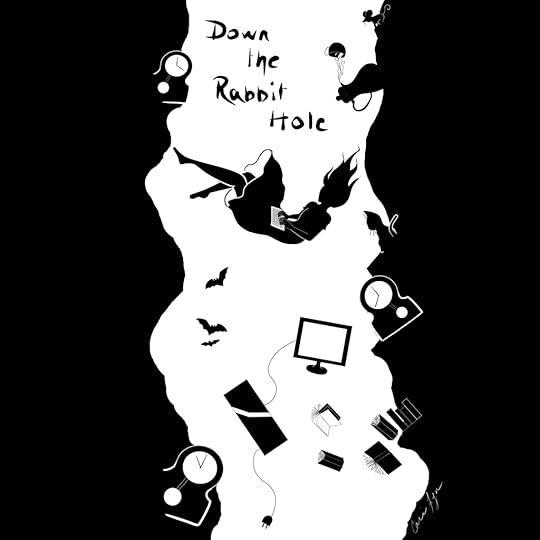Down the Rabbit Hole – Tapestry weaving

It has been a long while since I posted a Down the Rabbit Hole! That doesn’t mean I haven’t fallen down a few between now and then. Although, in this case, I have to admit I jumped!
I was researching material for The White Hind, the third book in my Stolen Away series when I carelessly leapt off the edge and found myself falling endlessly, much like Alice.
It turns out that there is a LOT of information out there about the textile arts. However, my focus was on tapestries in particular. How did they work such beautifully intricate pictures into cloth? How long did it take? What were tapestries used for? What tools did they use? – You can see how this went, can’t you? So, I will only share a few interesting tidbits with you here and add the links below in case you too want to jump into this rabbit hole.
Interesting tidbitsThe weavers worked on the reverse side of the tapestry, which means they were working on the mirrored image of what the piece would look like on the finished side.
The images they used to create these designs were called “cartoons” and were full scale drawings of what the final piece would look like. These designs were traced directly onto the bare warp threads or attached to the loom directly. If the weavers were using a high-warp loom, the cartoon was hung behind them and a mirror used to allow them to copy the design.
Threads of precious metal were sometimes used in the weaving, and on occasion said tapestries would be burned in order to retrieve the metal.
Tapestries were not only symbols of wealth and prestige; they also had practical uses such as insulation, door covers, and bed curtains. So, it was not uncommon for them to be packed up and brought from place to place whenever their owner’s household moved.
Since literacy was not common in the Middle ages, the Church and aristocracy used tapestries as a means of education and propaganda.
And this isn’t even a drop in the bucket of information I ran across!
So what does weaving and tapestries have to do with The White Hind? Well, you might have to wait for its release to learn that. I am working on a release date towards the end of this year/beginning of next. Which gives you plenty of time to read the first two books in the series, Lumina and the Goblin King and The Broken Court, if you have not already. If you have, then I can tell you that The White Hind takes place a number of years after the end of The Broken Court and follows Thom, the once broken, fairy-lost boy, now a man full grown, coming home after having been gone for a long, long while.
Links:A quick note – I am not affiliated with any of the sites whose links I have shared below. I make no money if you click on them, and any of the ads or opinions seen there do not necessarily reflect my own opinions or suggestions.
Making a Tapestry—How Did They Do That? – The Metropolitan Museum of Art
Tapestry | Definition, History, Types, Materials, Techniques, & Facts | Britannica
HISTORY OF VINTAGE TAPESTRIES AND WOVEN GOODS – AltPDX
History of tapestries – tapestry weaving – gobelins wall-hangings
a field guide to needlework – Tapestry
Great Tapestry of Scotland – Wikipedia
Apocalypse Tapestry – Wikipedia
The Unicorn Tapestries – Wikipedia
The High Warp Tapestry Loom – Erindale Tapestry Studio
Tapestry looms: Matching loom choice to what you want to weave — Rebecca Mezoff
Tapestry 101-Tapestry Defined – CNCH
The joy of a beautifully made tapestry tool — Rebecca Mezoff
All About Tapestry Bobbins | Weaving Resources
Bobbins: a picture dictionary — Rebecca Mezoff
Old York receives $35K grant to conserve colonial embroideries
Two Nerdy History Girls: Bed Time, Eighteenth Century Style
Enjoy!!



